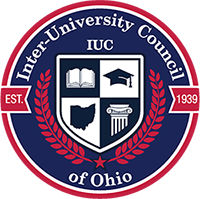By Laura Lanese, President and CEO of the Inter-University Council of Ohio
Cooler evenings, changing leaves, and the start of football mean back to school for many Ohioans. This year, Ohio’s public universities welcomed back for the first day of class 291,599 students to our 14 main and 24 regional campuses. Many of these students will benefit from enhanced funding for financial aid programs, including the 78% increase to Ohio College Opportunity Grants for low-income students, the new $3,000 per student Ohio Work Ready Grants, the $7,000 in Education Support Fund grants for Ohioans with disabilities, and the new Governor’s Merit Scholarship for the top 5% of every graduating class in Ohio. The Inter-University Council of Ohio (IUC), the association of Ohio’s 14 public universities, is grateful for the funding provided by Governor DeWine and the General Assembly in the recently enacted state budget.
Students attend our institutions because they know they will receive a quality education at an affordable price. They also know that a college degree will be life changing. Studies show that individuals with a bachelor’s degree earn approximately $2.8 million over their lifetimes, $3.2 million with a master’s degree, and $4.7 million with a professional degree. On average, individuals with a bachelor’s degree will earn $1.2 million more over their lifetimes than those with a high school diploma.[1] Education at an Ohio public university is an investment that pays huge dividends. Every $1 an individual spends to attend an Ohio public university, returns $5.60 in lifetime earnings. That is why here at the IUC we say, “The more you learn, the more you earn.”
It is not just students and alumni that benefit from Ohio’s public universities, it is all Ohioans. According to a 2023 economic impact study conducted for the IUC by Lightcast, an independent and nationally recognized company that provides labor market data, Ohio’s public universities added $68.9 billion in income to Ohio’s economy. Those universities supported 866,782 jobs – equal to 1 out of every 8 jobs in Ohio. From a taxpayer perspective, for every $1 taxpayers spent on public universities, they get a return of $4.60 in added tax revenue and public sector savings. In the area of research alone, Ohio’s public universities received 2,577 invention disclosures, filed 2,002 new patent applications, produced 459 licenses, and created a net total of $1.9 billion in added income for the state economy.
Just as quality and innovation are important pillars supporting the success of Ohio’s public universities, so is affordability. Ensuring that affordability is the Ohio undergraduate tuition guarantee program. The program provides all eligible new first-year undergraduate students with the certainty and predictability that tuition, mandatory fees, and room and board charges will not increase over the ensuing four academic year period from their first enrollment. That means, for this current academic year, those first-year students will not see an increase of more than 3% for the entire four-year period they are earning their degree. That, in turn, translates into a less than 1% increase in each year of their college education, significantly less than the rate of inflation. Since 2007, tuition and fees across Ohio’s public universities have increased less than the rate of inflation.
As our institutions work to ensure our students receive an affordable, yet high-quality education, we are delighted to welcome students back to another exciting academic year full of opportunity and memories.
Laura Lanese is President and CEO of the Inter-University Council of Ohio, a voluntary educational association of Ohio’s 14 public universities that offer a broad range of associate, baccalaureate, graduate, and professional programs.
[1] Association of Public & Land-Grant Universities, https://www.aplu.org/our-work/4-policy-and-advocacy/publicuvalues/employment-earnings/#11; citing Abel and Deitz, “Despite Rising Costs, College Is Still a Good Investment,” Federal Reserve Bank of New York, 2019; last accessed April, 2023.
